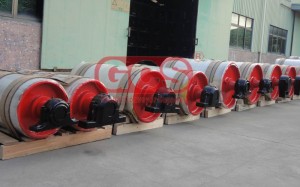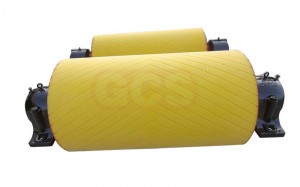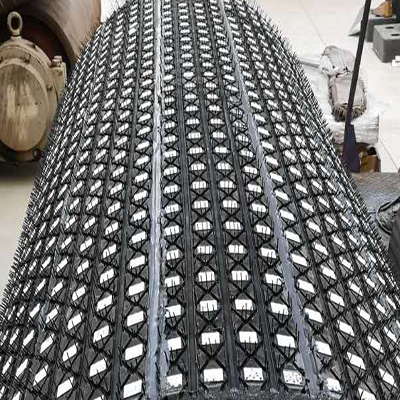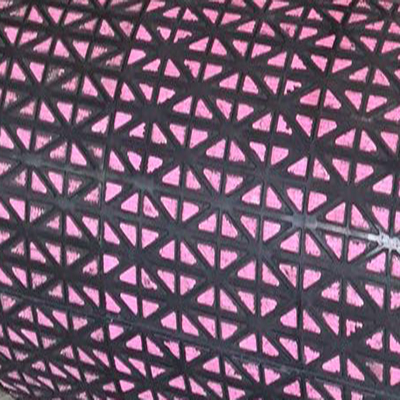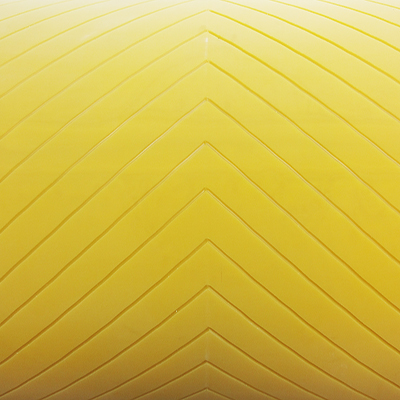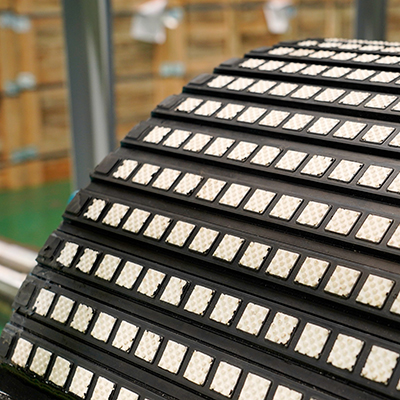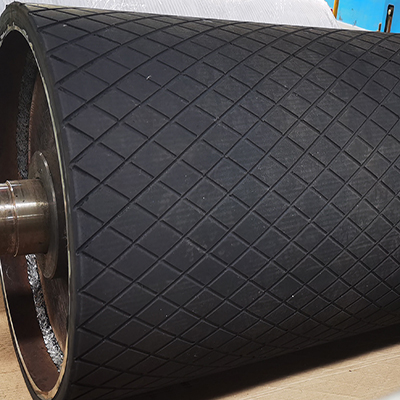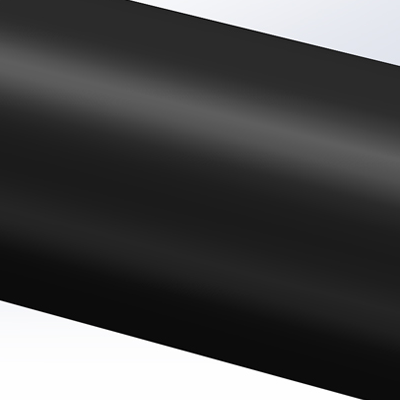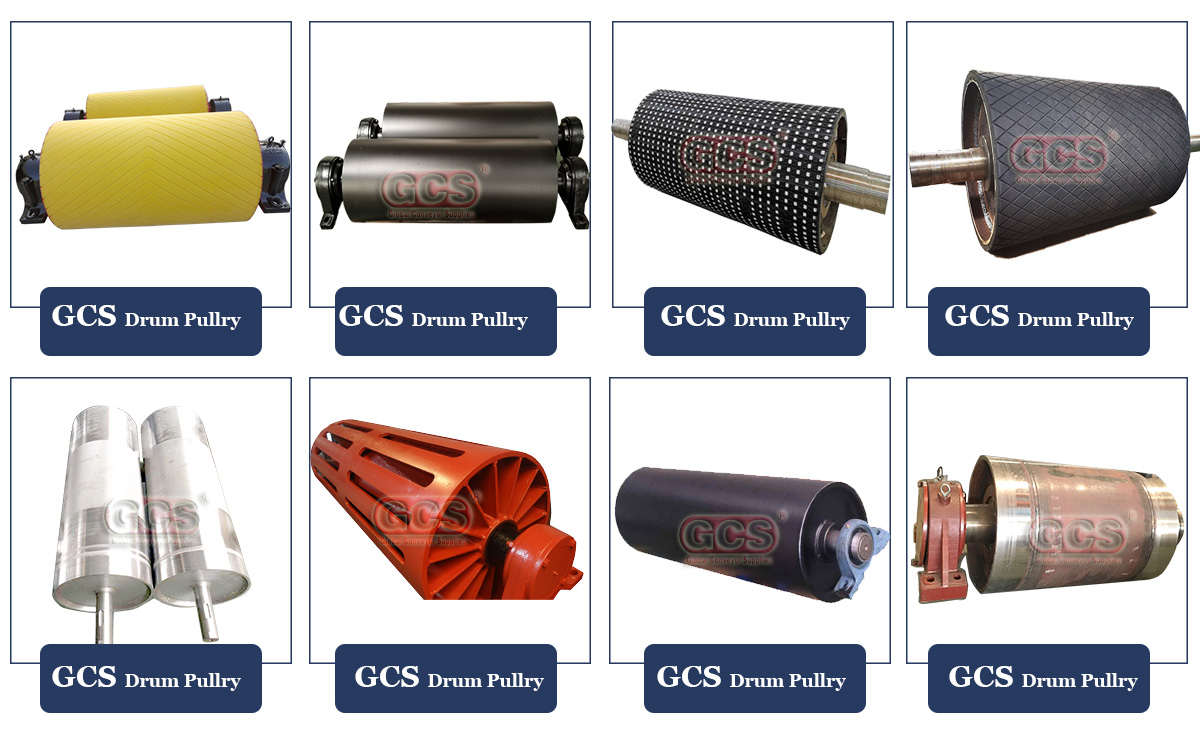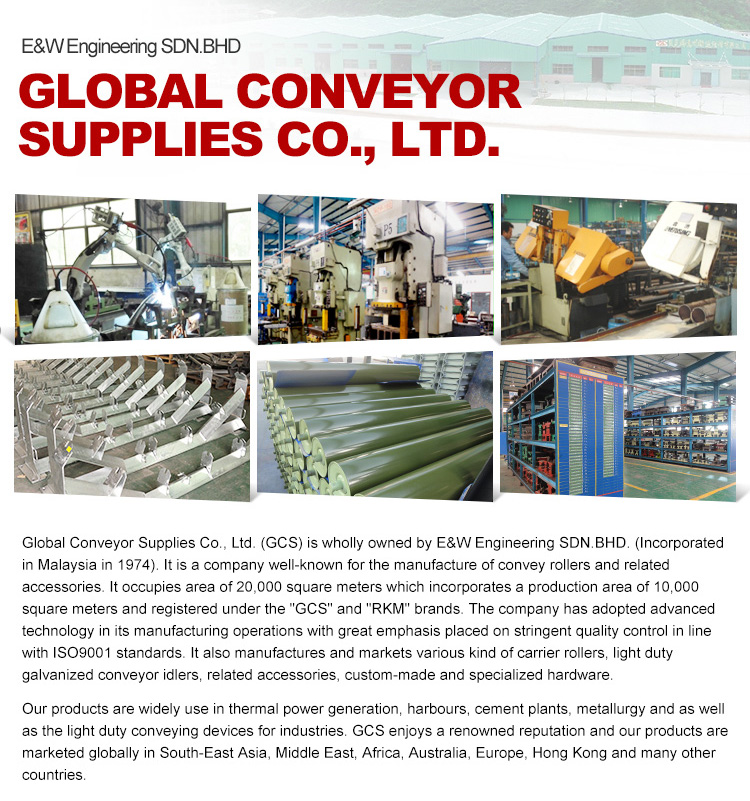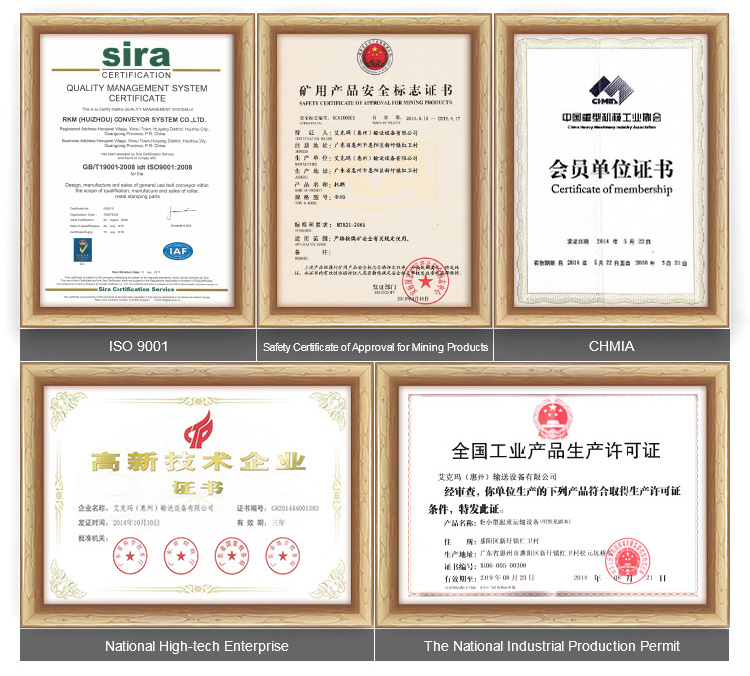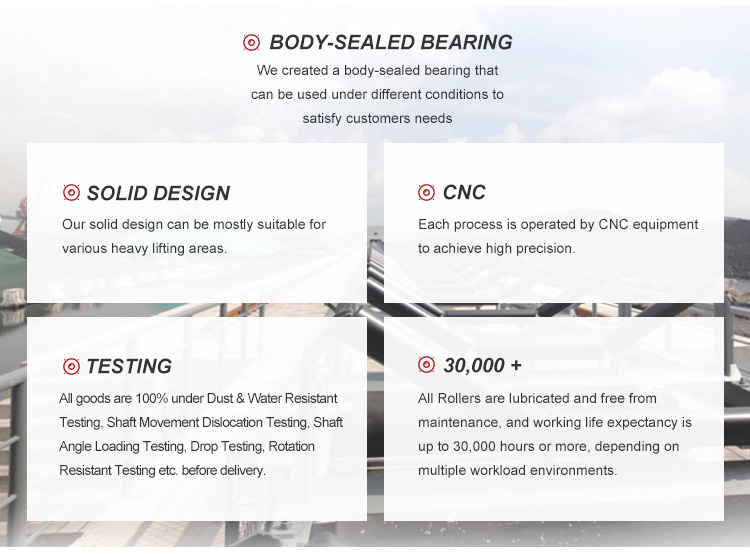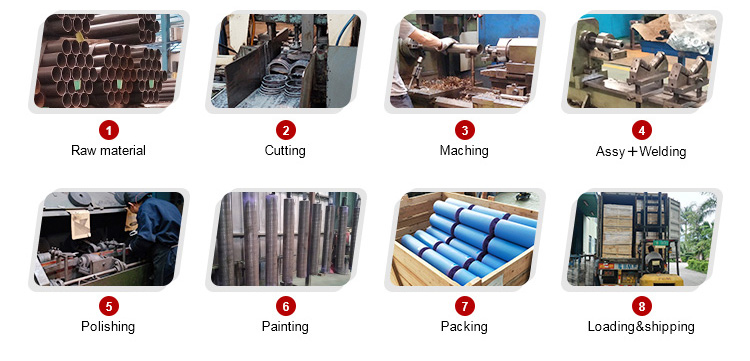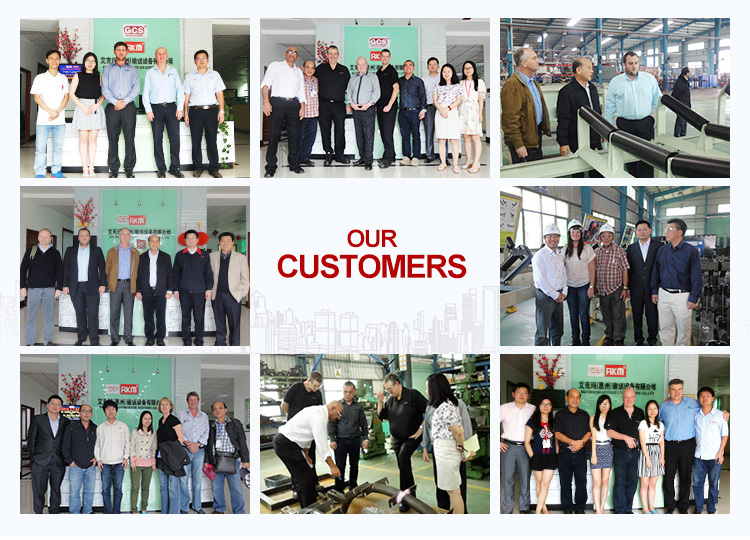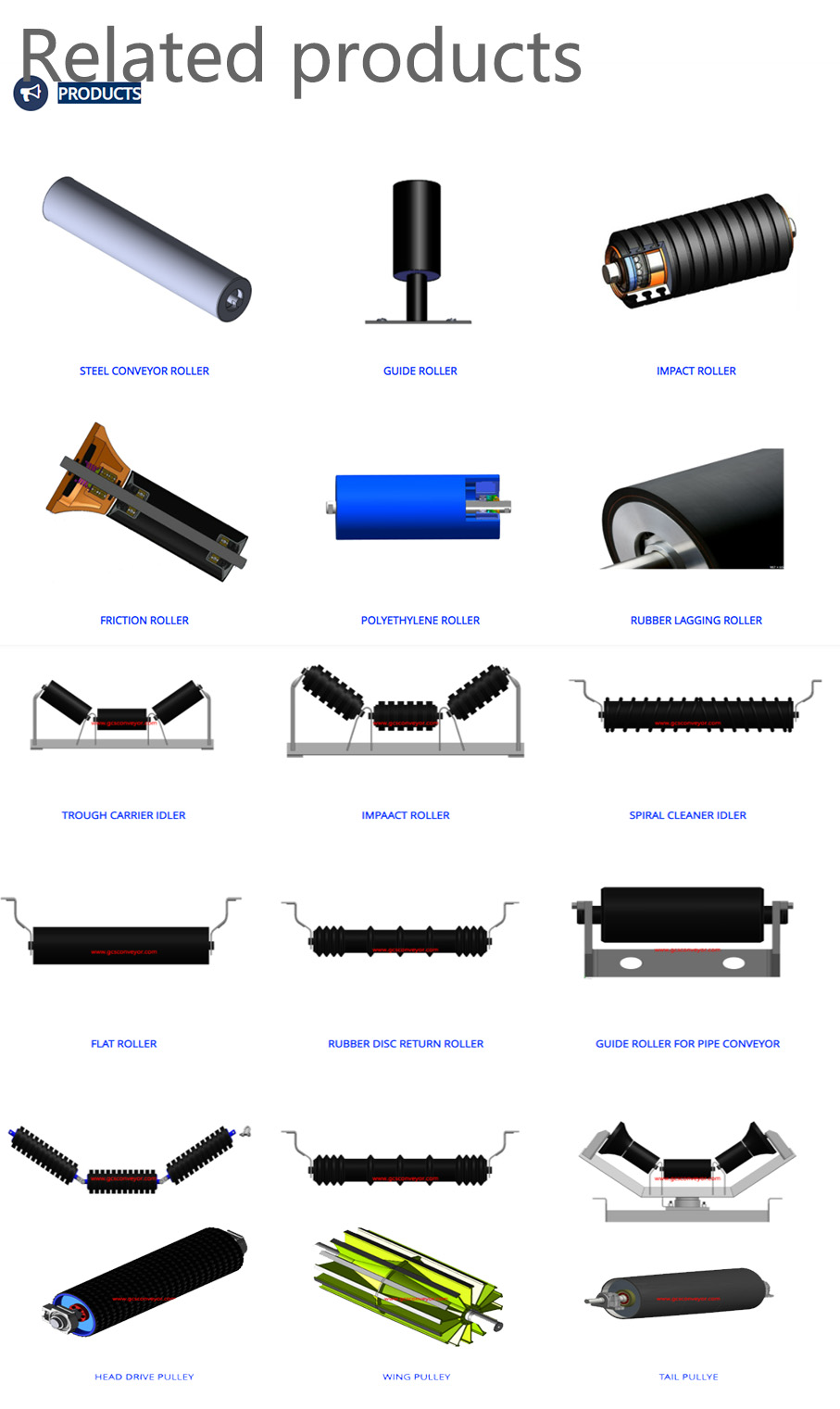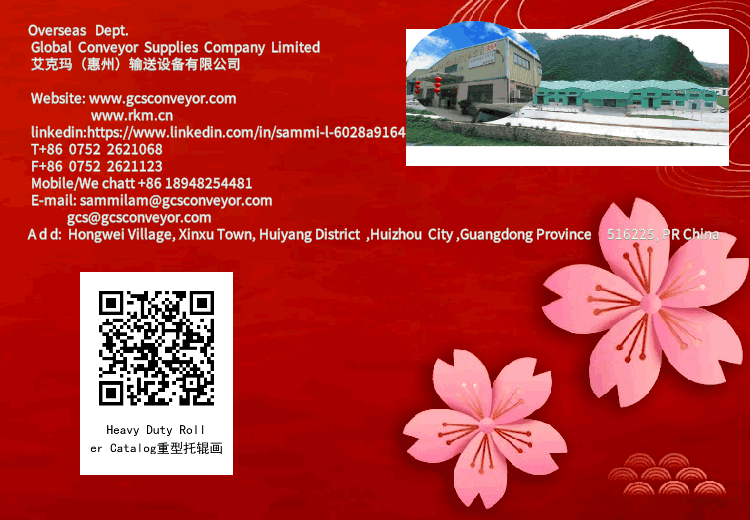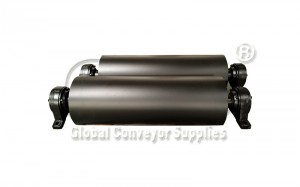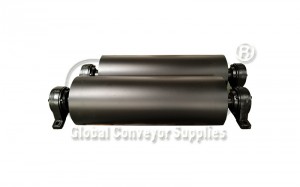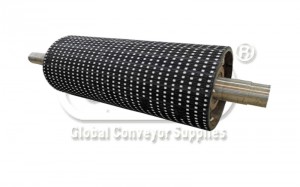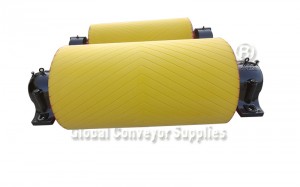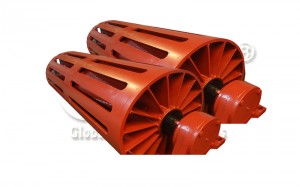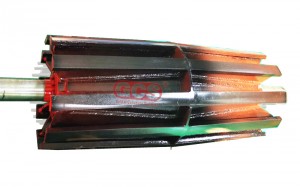High-quality Conveyor Pulleys for Lagging used in Belt Conveyor From China
The drive pulley is the component that transmits power to the conveyor. The Conveyor Drum Pulley surface has smooth, lagged, and cast rubber, etc., and the rubber surface can be divided into rubber covered with herringbone and diamond. The herringbone rubber-cover surface has a large friction coefficient, good slip resistance, and drainage, but is directional. Diamond rubber-cover surface is used for conveyors that run in both directions. From the material, there are steel plate rolling, cast steel, and iron. From the structure, there is assembly plate, spoke and integral plate types.
The bend pulley is mainly under the belt. If the belt conveying direction is left, the bending roller is on the right side of the belt conveyor. The main structure is the bearing and the steel cylinder. The drive pulley is the drive wheel of the belt conveyor. From the relationship between the bend and drive pulley, it is like two wheels of the bicycle, the rear wheel is the drive pulley, and the front wheel is the bend pulley. There is no difference in the structure between the bend and drive pulley. They are composed of the main shaft roller bearing and the bearing chamber.
GCS(conveyor idler manufacturers) pulley quality inspection mainly checks the shaft quenching and high temperature tempering, weld line ultrasonic flaw detection, rubber material and hardness, dynamic balance test, etc. to ensure product working life.
Different kinds of conveyor pulleys
Our (GCS)conveyor pulleys in all the following sub-categories:
Head pulleys
The head pulley is located at the discharge point of the conveyor. It usually drives the conveyor and often has a larger diameter than other pulleys. For better traction, the head pulley is usually lagged (with either rubber or ceramic lagging material).
Tail and wing pulleys
The tail pulley is located at the loading end of the belt. It comes with either a flat face or a slatted profile (wing pulley), which cleans the belt by allowing material to fall between the support members.
Snub pulleys
A snub pulley improves the traction of the drive pulley, by increasing its belt wrap angle.
Drive pulleys
Drive pulleys, which can also be the head pulley, are driven by a motor and power transmission unit to propel the belt and material to the discharge.
Bend pulleys
A bend pulley is used for changing the direction of the belt.
Take-up pulley
A take-up pulley is used to provide the belt with the proper amount of tension. Its position is adjustable.
|
Shell Dia (Φ) |
250/215/400/500/630/800/1000/1250/1400/1600/1800(Customized) |
|
Length(mm) |
500-2800(Customized) |
| Pulley Diameter ØD (mm) |
Ø200, Ø250, Ø300, Ø315, Ø400, Ø500, Ø630, Ø800, Ø1000, Ø1250 | |||||||||
| Belt width B (mm) |
400 | 500 | 650 | 800 | 1000 | 1200 | 1400 | 1600 | 1800 | 2000 |
| Pulley Face Length L (mm) |
500 | 600 | 750 | 950 | 1150 | 1400 | 1600 | 1800 | 2000 | 2200 |
| Diameter At Bearing Ød |
Distance Center – Center Bearings K |
H | R | J | M | N | G | Plummer Block Type | Bearing |
| 40 | L+180 | 50 | 43 | 170 | 205 | 60 | M12 | SNL 509 | 22209EK |
| 50 | L+180 | 55 | 48 | 210 | 255 | 70 | M16 | SNL 511 | 22211EK |
| 60 | L+180 | 60 | 55 | 230 | 275 | 80 | M16 | SNL 513 | 22213EK |
| 70 | L+180 | 70 | 60 | 260 | 315 | 95 | M20 | SNL 516 | 22216EK |
| 80 | L+190 | 75 | 70 | 290 | 345 | 100 | M20 | SNL 518 | 22218EK |
| 90 | L+200 | 85 | 80 | 320 | 380 | 112 | M24 | SNL 520 | 22220EK |
| 100 | L+210 | 95 | 88 | 350 | 410 | 125 | M24 | SNL 522 | 22222EK |
| 110 | L+230 | 100 | 93 | 350 | 410 | 140 | M24 | SNL 524 | 22224EK |
| 115 | L+240 | 105 | 95 | 380 | 445 | 150 | M24 | SNL 526 | 22226EK |
| 125 | L+250 | 110 | 103 | 420 | 500 | 150 | M30 | SNL 528 | 22228EK |
| 135 | L+270 | 115 | 110 | 450 | 530 | 160 | M30 | SNL 530 | 22230EK |
| 140 | L+280 | 118 | 118 | 470 | 550 | 170 | M30 | SNL 532 | 22232EK |
| Pulley Diameter ØD (inch) |
8″, 10″, 12″, 14″, 16″, 18″, 20″, 24″, 26″ | |||||||||
| Belt width B (inch) |
18″ | 20″ | 24″ | 30″ | 36″ | 42″ | 48″ | 54″ | 60″ | 72″ |
| Pulley Face Length L (inch) |
20″ | 22″ | 26″ | 32″ | 38″ | 44″ | 51″ | 57″ | 63″ | 75″ |
For more configurations please contact us
To get a quick quote, Go now
GCS reserves the right to change dimensions and critical data at any time without any notice. Customers must ensure that they receive certified drawings from GCS prior to finalizing design details.
1.How many types of conveyor pulleys are there?
There are Head pulleys, Tail and wing pulleys, Snub pulleys, Drive pulleys, Bend pulleys, Take-up pulleys. More details please refer to What are the different types of pulleys in a belt conveyor?
2.What is a pulley on a conveyor?
A conveyor pulley is a mechanical device used to change the direction of the belt in a conveyor system, to drive the belt, and to tension the belt. Modern pulleys are made of rolled shells with flexible end disks and locking assemblies.
3.Which pulley used in conveyor belt?
Head pulleys and Tail pulleys are normally used in conveyor belt. Other pulleys may also be used according to requirements


